I can see from my Substack stats that many Voracious subscribers arrive here via my instagram account, emilygalebooksetc. In which case my bookcase will be quite familiar.
This bookcase has been a source of joy for the best part of a decade. I don’t think there’s been a day that I haven’t noticed it. In terms of its organisation, the layout makes sense to me partly through categorisation and partly the sheer hours I’ve spent looking at it. I never have trouble locating a particular book but that doesn’t mean my shelving is entirely logical.
If you’ve read my post Pressing Pause you’ll know that I’ve been in the UK for a few weeks and haven’t been able to keep up with Voracious. My happy update is that my sister is making a terrific recovery from her stroke, finally back at home with her beautiful boys and making strides through aphasia and apraxia. From the start she’s knocked me for six with her stoicism and sense of humour.
I am almost ready to return to Australia and pick up my other life. Before the difficult goodbye, I decided to spend an evening with my parents’ book collection, inherited through my mum’s side. My great-great-grandfather, great-grandfather and grandfather were art dealers (my grandfather reluctantly so: he wanted to be a writer) and bibliophiles. But it’s my great-grandfather (1885-1966) who was the most organised with his books, as demonstrated by his handwritten catalogue.
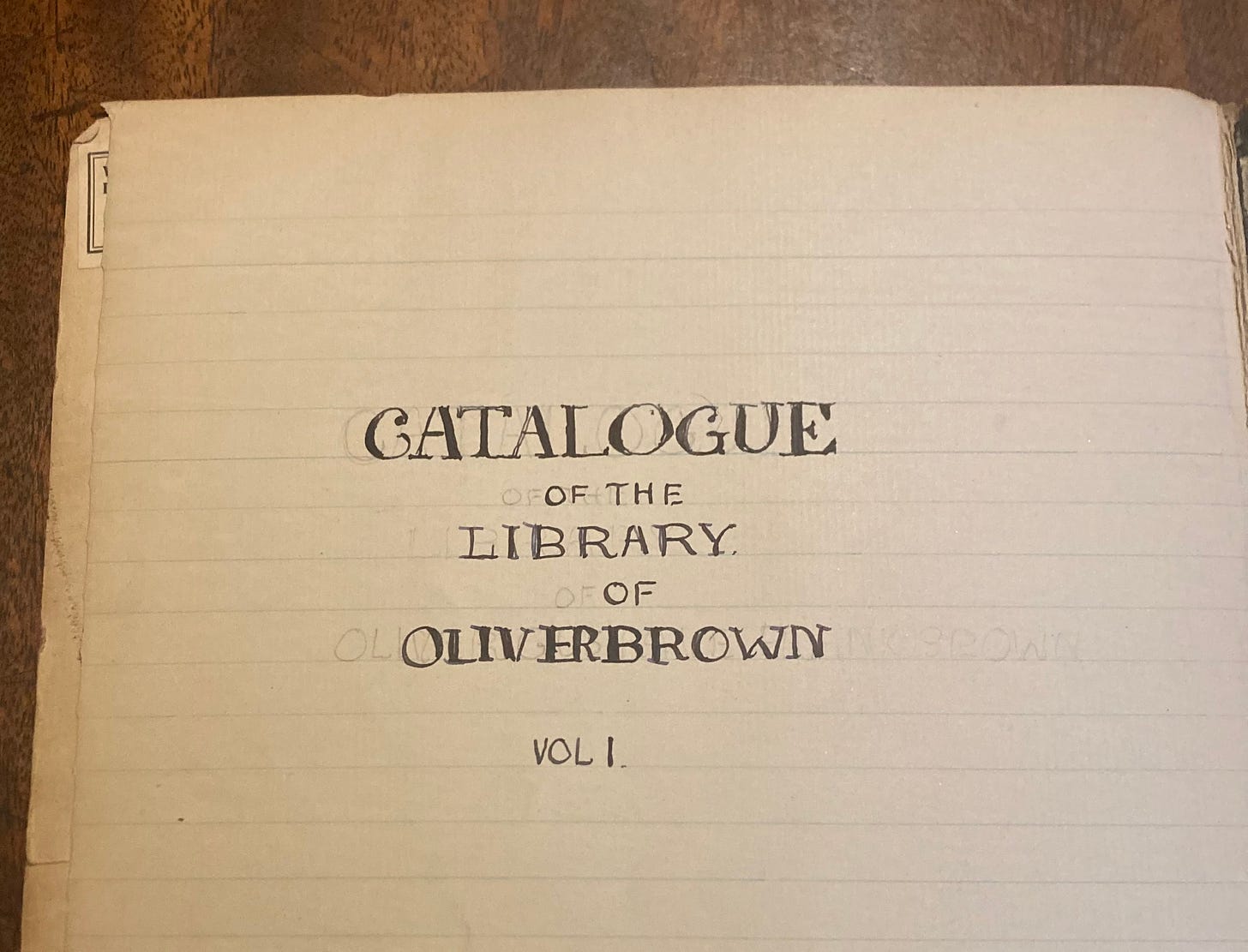
It’s an A to Z often but not always by author (ie. “BIBLE. (The, designed to be read as literature)” is under B. The first entry sets the pattern: [author / title] [something about the book] [something about the illustrations] [date] [publisher]:
1 ANACREON Done into English by Abraham Cowley.
Copper-plate engravings by Stephen Gooden. 1923. The Nonesuch Press. London.
The illustration component is always listed, which I expect he picked up from his father who he describes in his diaries thus:
“He was a Victorian and his interests belonged to that age. He loved illustrators and illustrations from Hogarth to the pre-raphaelites, from Keene to Phil May and Arthur Rackham. He always called on old Sir John Tenniel on his birthday and on Kate Greenaway on her birthday.”
The earliest book I’ve seen is from 1726 (The Satyrs, John Dryden) and the catalogue continues into the mid-20th century. A few are crossed out, so he may have sold or gifted these. There are many books on art and artists, plenty of poetry, memoir and fiction. I know he enjoyed a bit of Crime because in his 1920s diary he notes: “For the rest of the day I sat by the fire, slept and read Tracks in the Snow, Lord Charnwood’s detective story.”
At some point he numbered them, 1 to 639.
Every time I’m in the UK I try to look more closely at one or two of his books. This time around my eye was drawn to Lewis Carroll’s Sylvie and Bruno (1889). Apparently it was a flop. From Wikipedia: “Sylvie and Bruno has never been praised by critics. It sold just 13,000 copies in its early editions.” But of interest to me (and my fellow time-travellers): “The watch used by Sylvie and Bruno has been described as an early type of time machine, making Sylvie and Bruno an early example of time travel fiction.”
I also looked through a book with a padded cover called Mrs Browning (about the life of Elizabeth Barrett Browning). It has a handwritten note inside it “to Oliver Brown on his marriage, Sept 1910” and this quote, credited to Ralph Waldo Emerson:
“As we are, so we associate, the good, by affinity, seek the good.
The vile by affinity, the vile.”
It is not a pristine or complete collection any more but I think Oliver would be glad to know how much joy his descendants still derive from being in the same room as it. I love the marbled endpapers, ribbon markers, deckled edges, bookcloth, half-leather binding, gold tooling, embossing, and the tissue guards over the illustrations.
And of course the smell.
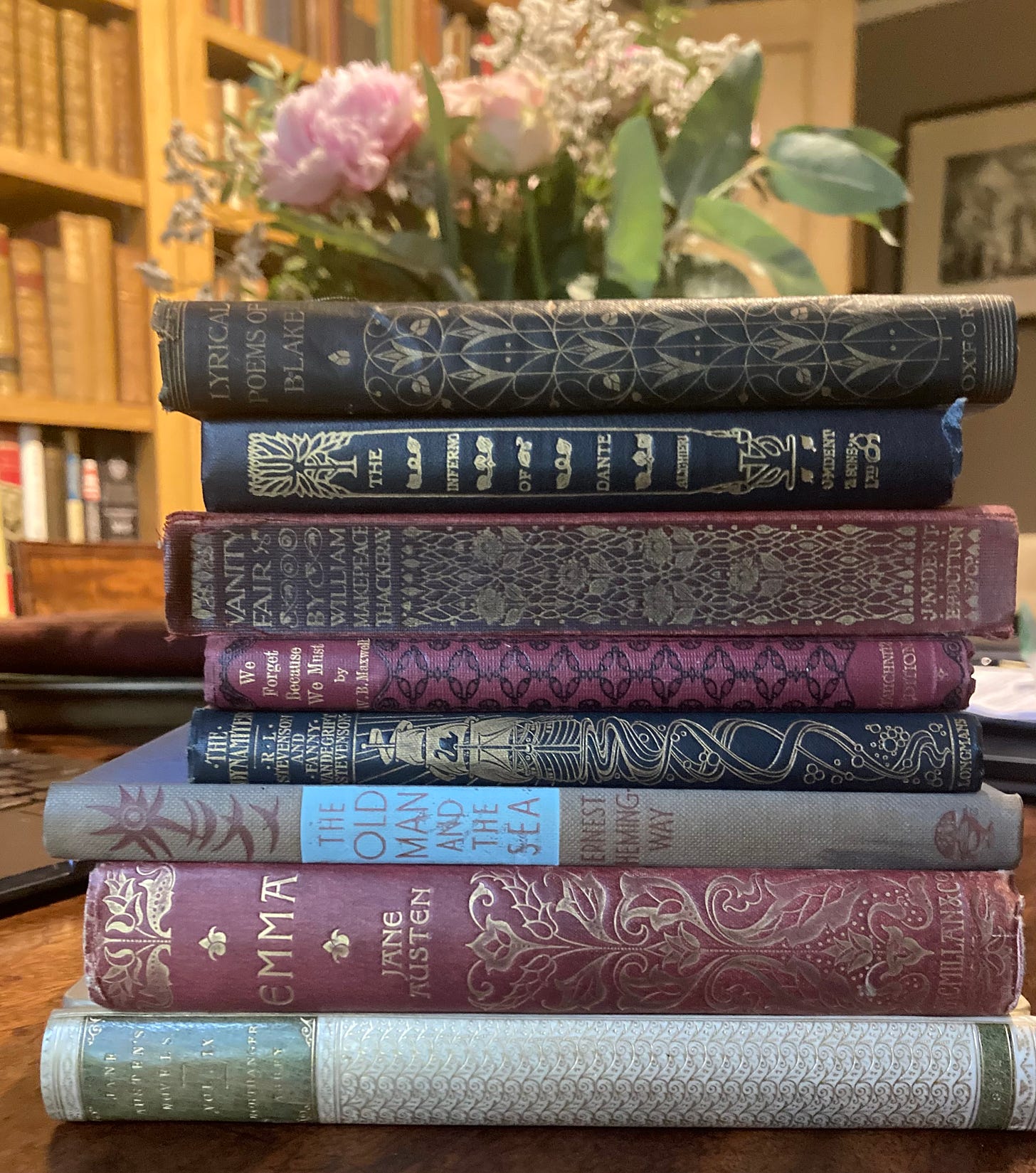
These days, my family know me as the chief bibliophile. My collection isn’t anywhere near as classically beautiful as Oliver’s but I wonder how it will appear in a hundred years when I’m long gone. I hope someone down the line enjoys picking through it.
Thanks for your messages and your patience while I get back on track. Although I wasn’t able to write a June nutshell, if you’re a new arrival you may like to know that the monthly nutshells are always free to read or share and can be found in their own category: The Nutshells.
Do you keep all of your books? And are you a cataloguer like my great-grandfather?





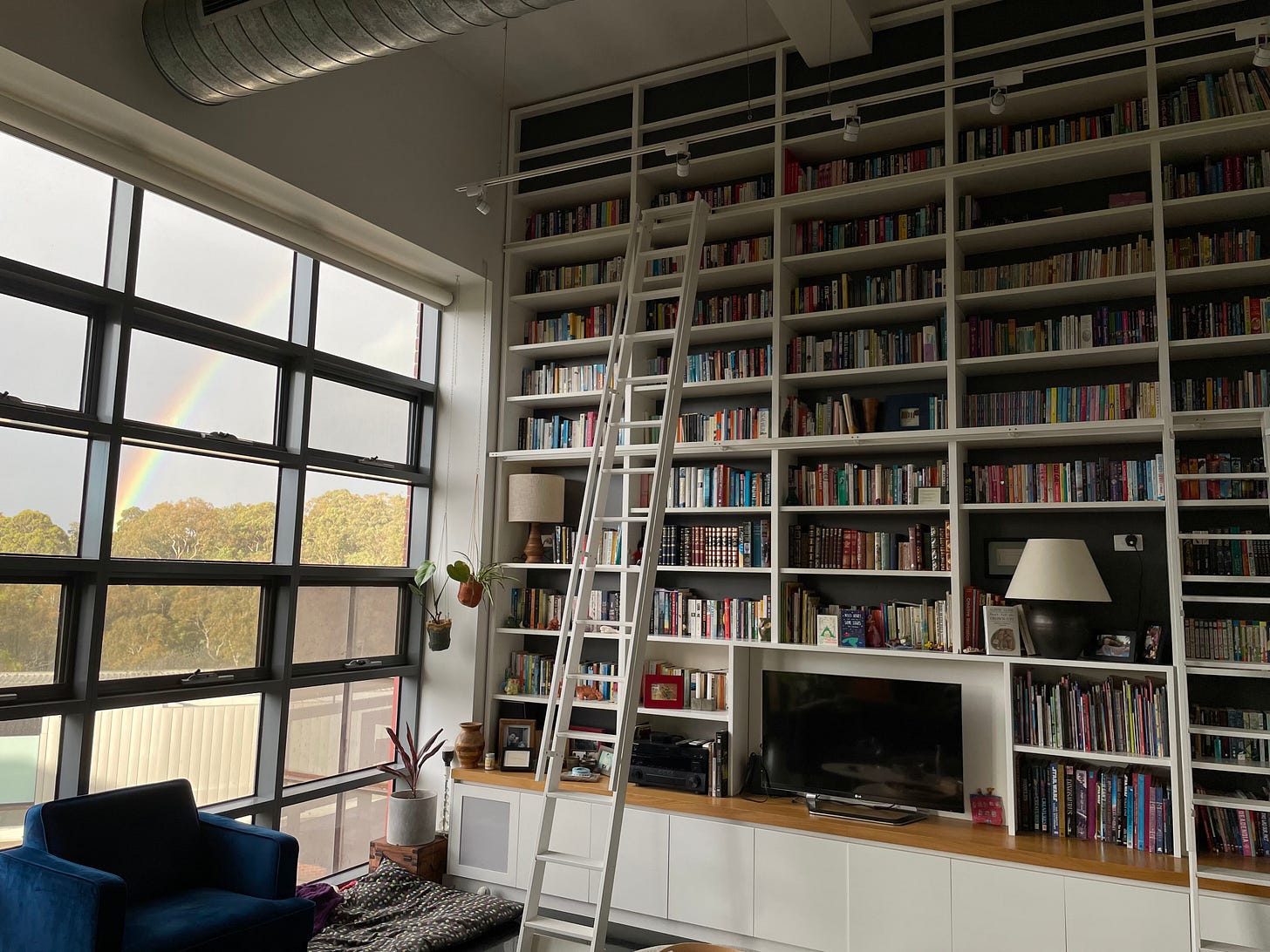
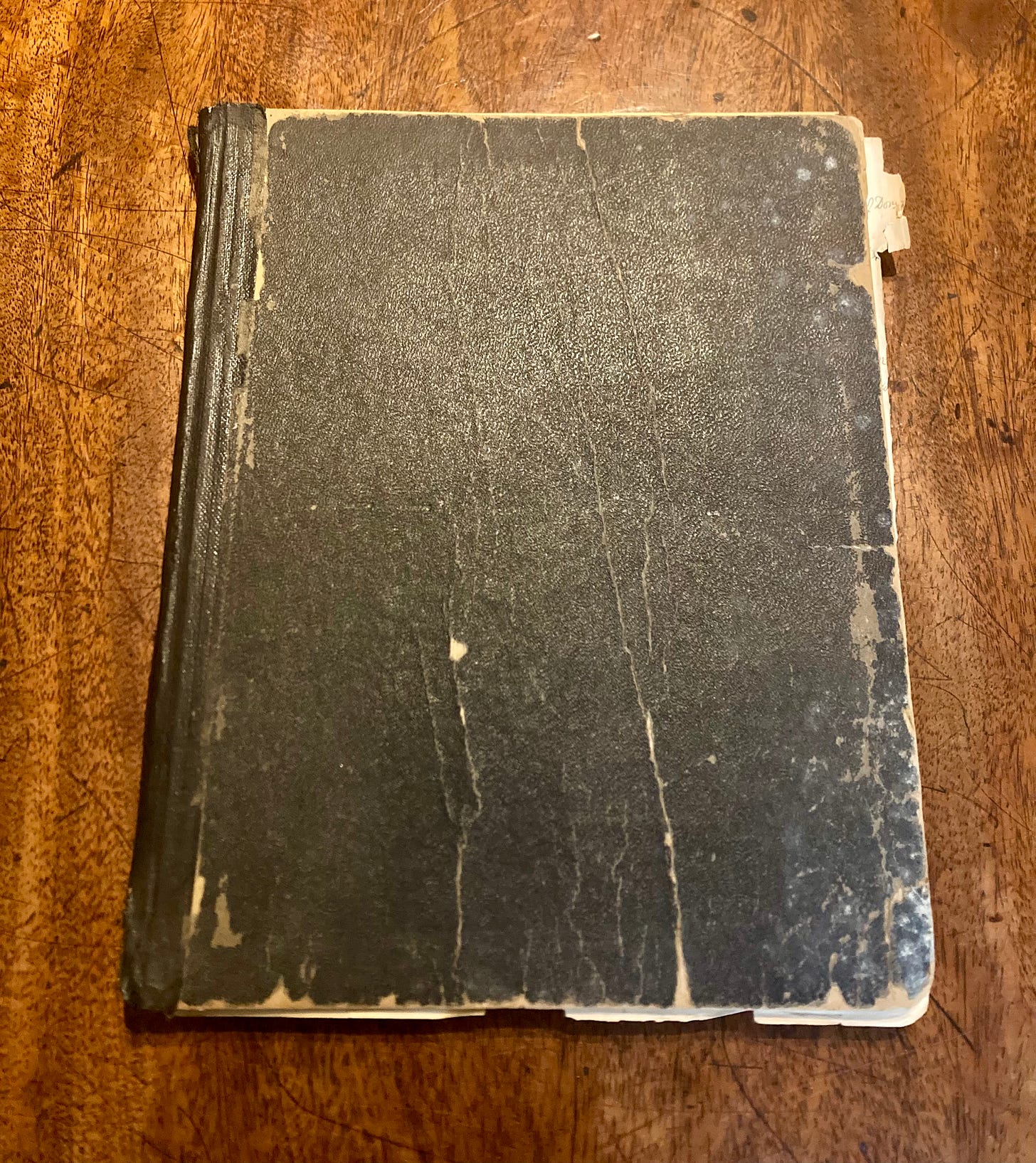
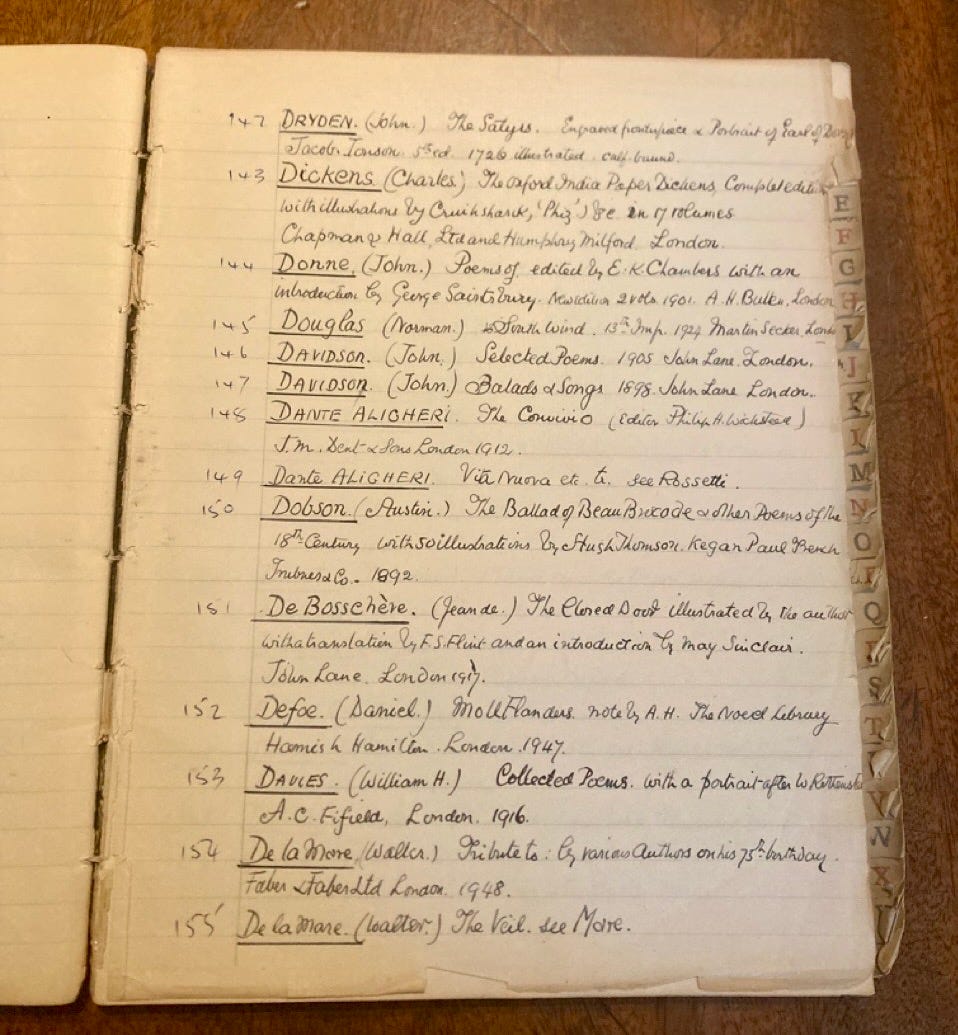
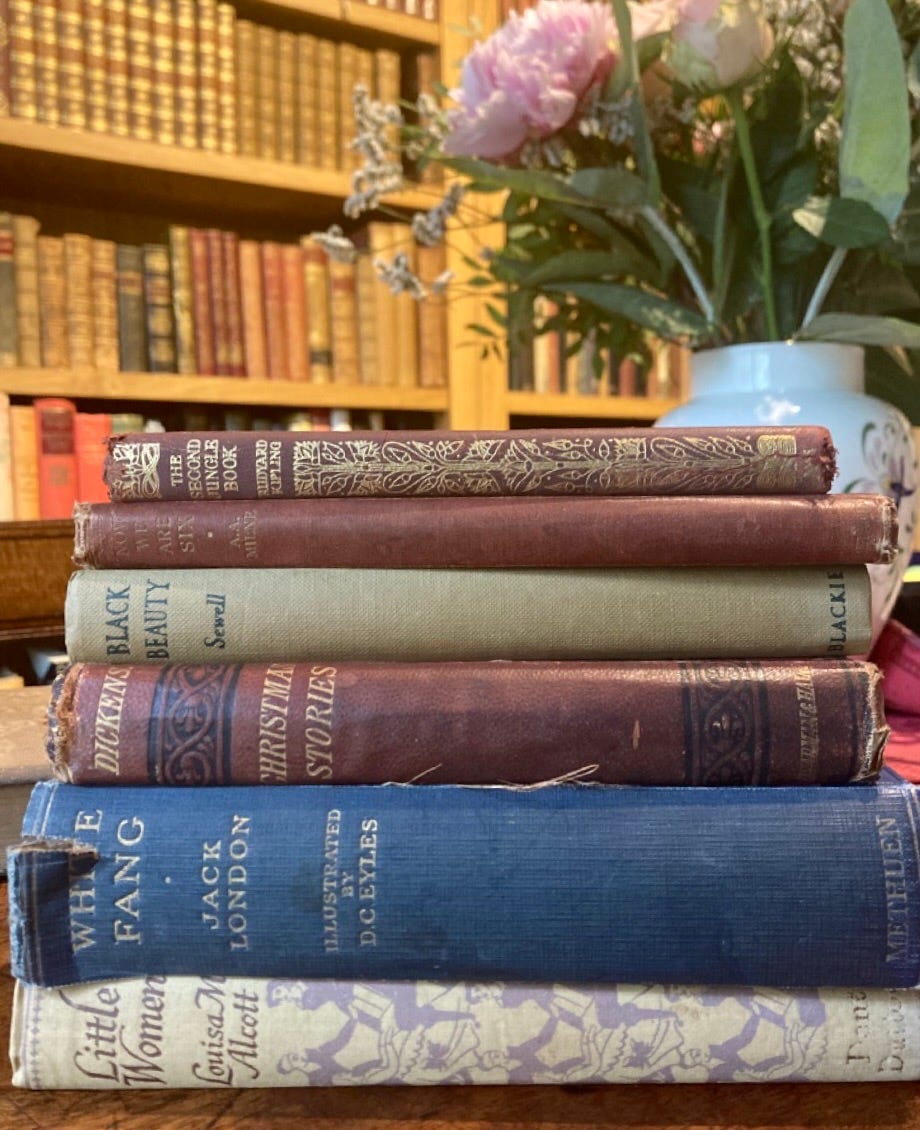
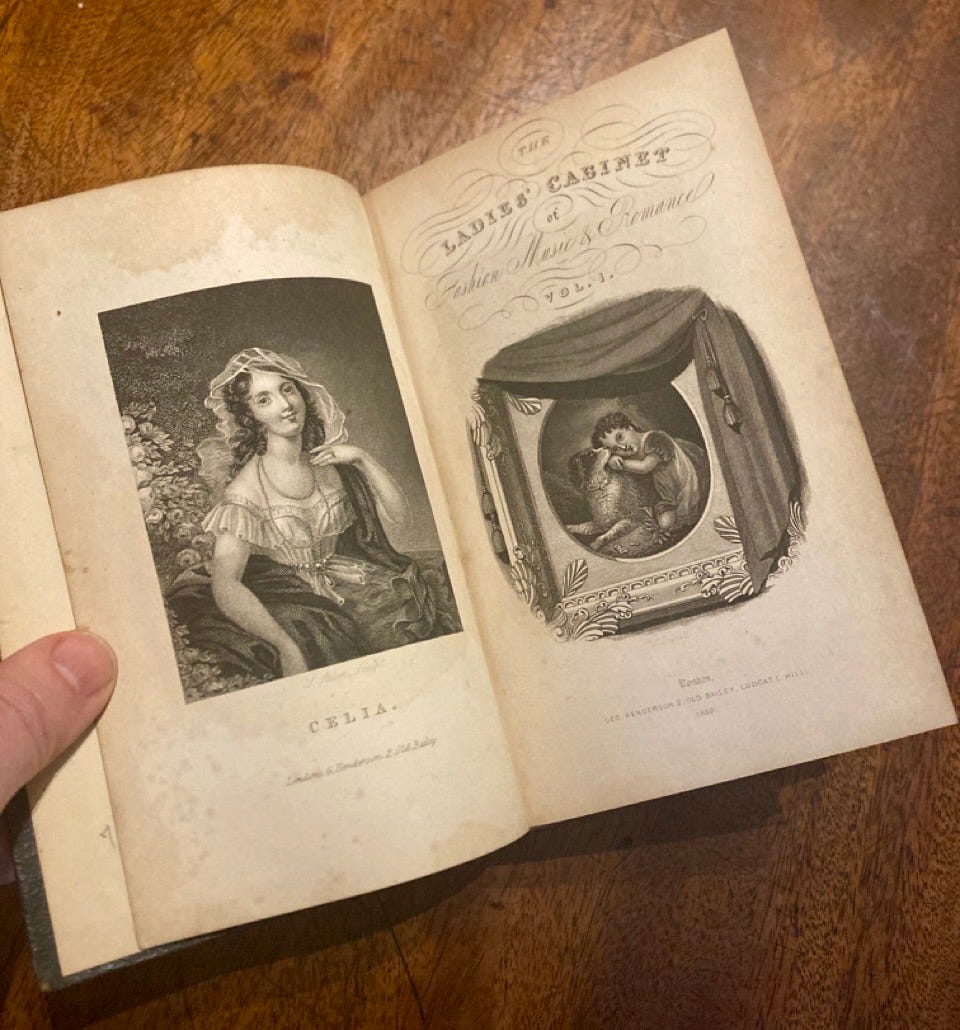
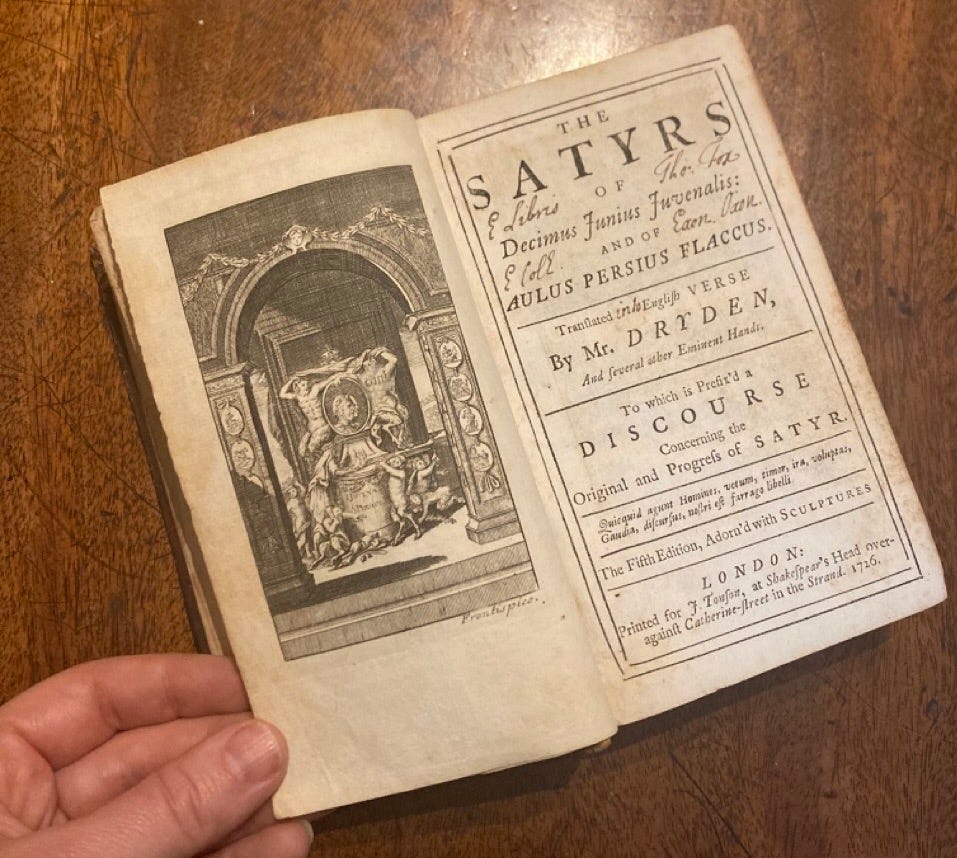
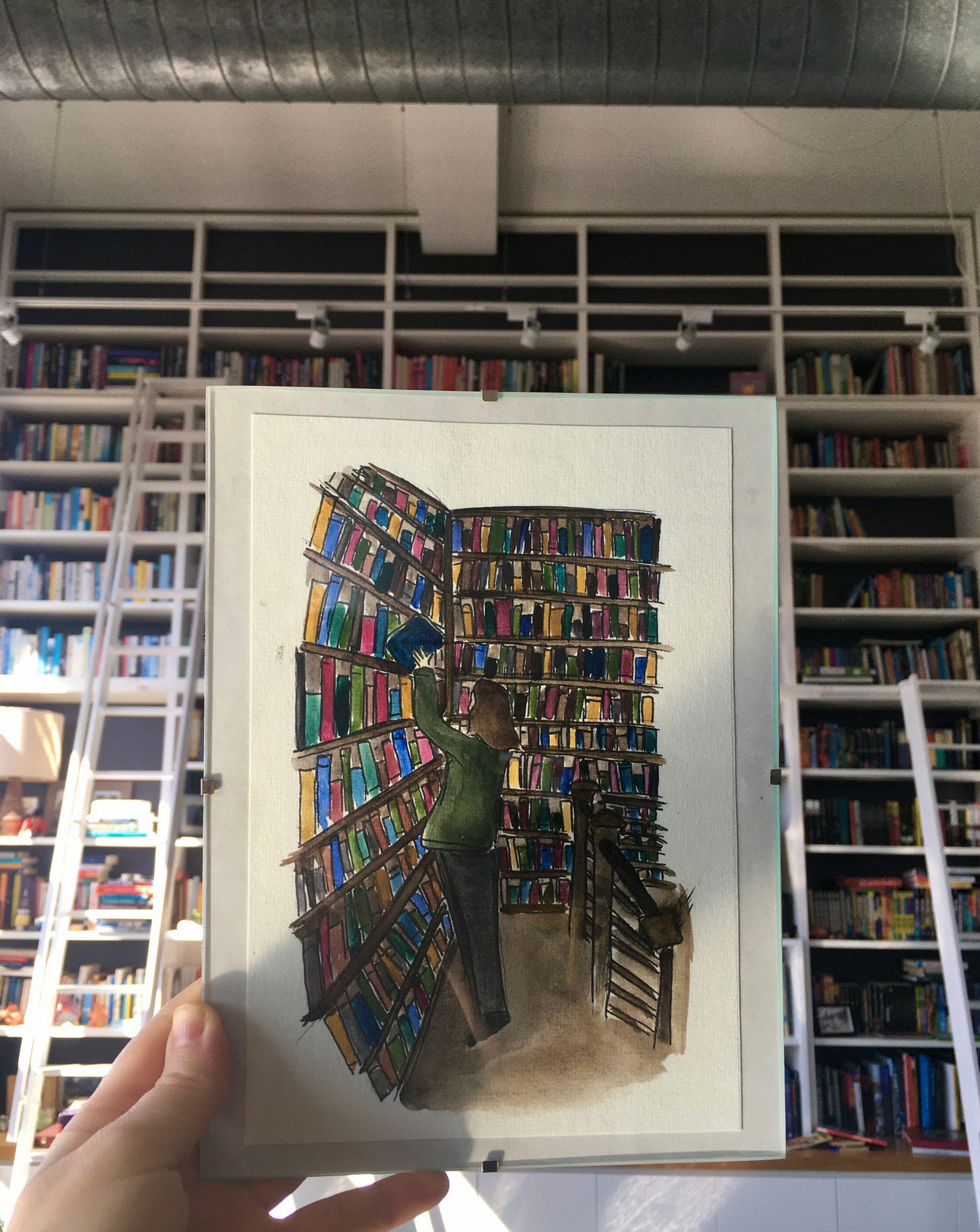
So glad to hear your sister is on the mend! 95% of the books I own are unread; I tend to only keep books I love or have had signed.
Oh that handwritten catalogue is so beautiful. What a thing to have.